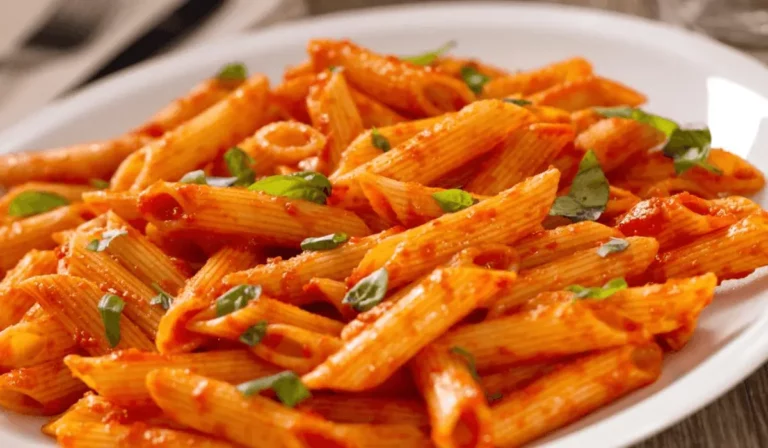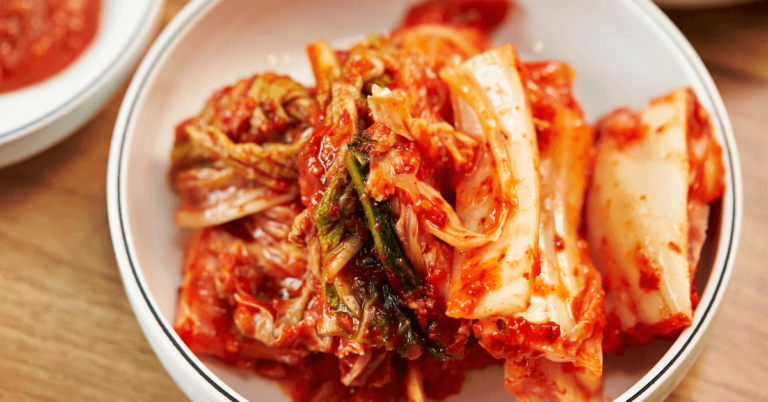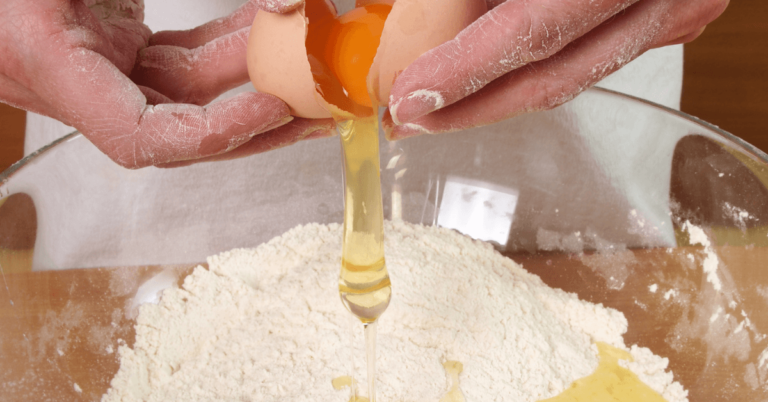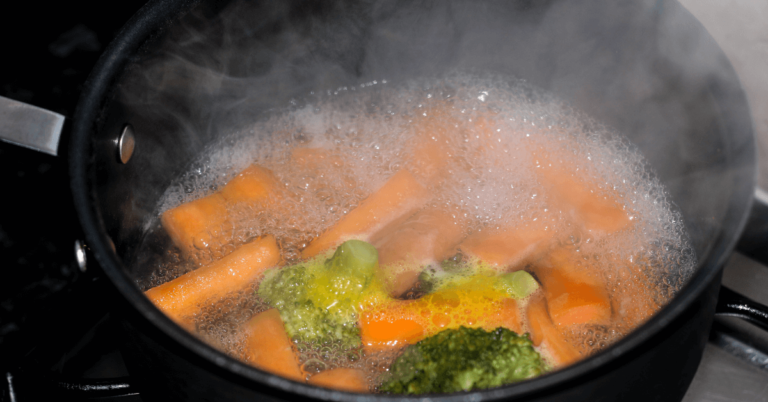Both beloved Italian appetizers, bruschetta and crostini have become staples on antipasto platters worldwide. But what is the difference between bruschetta and crostini? Though they might look similar at first glance—crispy bread topped with flavorful ingredients—they differ in bread type, size, preparation method, and typical toppings. Understanding these distinctions can elevate your appetizer game and impress your guests with both knowledge and flavor.
Rustic Charm vs. Elegant Bite: A Breakdown of Their Unique Qualities
While bruschetta and crostini both start with toasted bread, the type of bread used and how it’s prepared make all the difference. Bruschetta, rooted in the word bruscare meaning “to roast over coals,” uses thick slices of rustic, country-style bread. It’s grilled, not just toasted, giving it a smoky flavor. Crostini, which translates to “little toasts,” are made with smaller, thinner slices, often from a baguette, and toasted until crisp in the oven.
Bruschetta leans into simple, bold toppings—think garlic, tomatoes, basil, and olive oil—while crostini offer a canvas for creative spreads like pesto, ricotta, or savory pâté. These appetizers don’t just differ in size and texture; they also differ in versatility, cultural use, and the experience they deliver at the table.
Key Ingredients That Define Each Appetizer
For Bruschetta:
- Rustic Bread (Ciabatta or Sourdough): Provides a hearty, chewy base that can handle juicy toppings and charring.
- Garlic: Rubbed on the grilled bread for a punch of flavor.
- Extra Virgin Olive Oil: Adds richness and authenticity.
- Tomatoes: Diced fresh tomatoes are a classic topping.
- Basil: Adds herbaceous brightness and freshness.
- Salt & Pepper: Enhances all the natural flavors.
For Crostini:
- Baguette Slices: Thin and crisp, ideal for bite-sized portions.
- Olive Oil: Brushed before toasting for golden, crunchy texture.
- Ricotta or Soft Cheese: Forms a creamy base for toppings.
- Pesto or Tapenade: Introduces intense, savory notes.
- Mushrooms, Sun-Dried Tomatoes, or Arugula: Offers variation and depth.
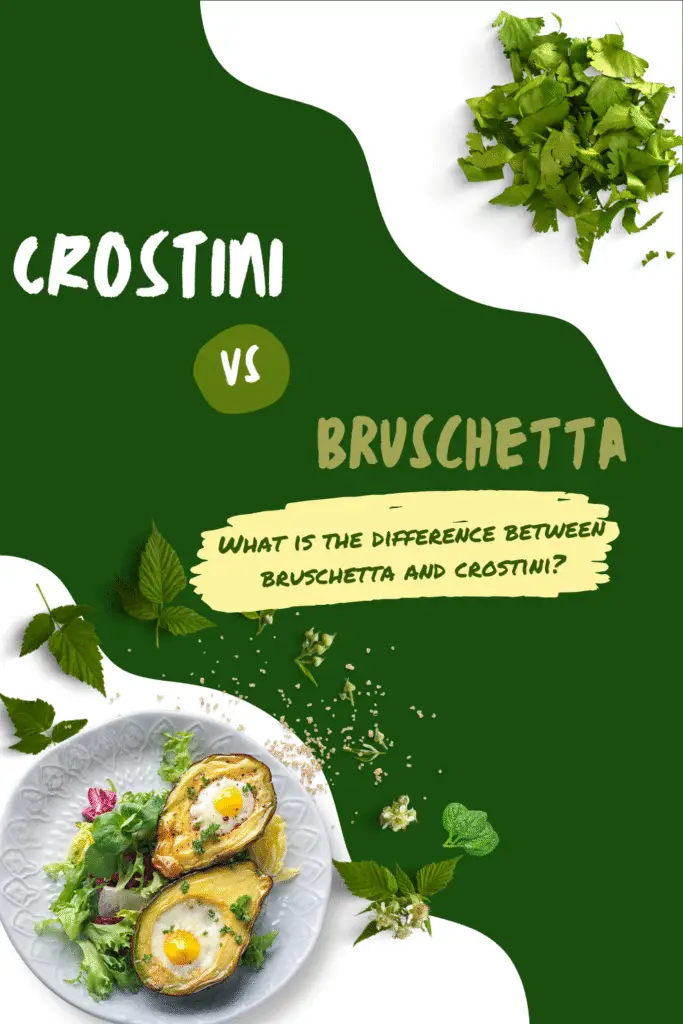
Ingredient Swaps and Smart Alternatives
If you’re missing some ingredients or catering to dietary preferences, try these clever substitutions:
- Bread Alternatives: Use gluten-free bread for either version. Try whole wheat baguette for crostini or a multigrain sourdough for bruschetta.
- Garlic-Free Option: For those avoiding garlic, try brushing the bread with shallot oil or an infused olive oil.
- Vegan Toppings: Replace cheese with cashew-based spreads or mashed avocado.
- Tomato Swap: Not tomato season? Roasted red peppers or marinated artichokes work beautifully on bruschetta.
- No Pesto? A lemon-herb hummus can substitute for pesto on crostini.
These swaps retain the essence of what makes bruschetta and crostini delicious without compromising flavor or texture.
How to Make Bruschetta and Crostini: Step-by-Step
- Prepare the Bread:
For bruschetta, slice a rustic loaf about ¾ inch thick. For crostini, use a baguette sliced thinly on the diagonal. - Toast or Grill:
Grill the bruschetta slices until charred on both sides. For crostini, bake the slices at 375°F until golden and crisp, flipping halfway. - Rub with Garlic (Bruschetta Only):
While the bread is still warm, rub each slice of bruschetta with a peeled garlic clove. - Add Olive Oil:
Drizzle both bruschetta and crostini with good-quality extra virgin olive oil for flavor and richness. - Top the Bread:
- Bruschetta: Spoon on a tomato and basil mixture, seasoned with salt and pepper.
- Crostini: Spread with ricotta or pesto, then top with mushrooms, arugula, or your preferred ingredient.
- Serve Immediately:
Enjoy warm or at room temperature. These appetizers are best fresh and lose texture if left too long.
Expert Tips to Elevate Flavor and Texture
- Choose the Right Bread: The heart of each dish lies in the bread. Use fresh, high-quality loaves—chewy and airy for bruschetta, firm and dense for crostini.
- Don’t Oversaturate: Especially for crostini, avoid overloading with wet toppings to keep the toast crisp.
- Use Seasonal Ingredients: Peak-season tomatoes and herbs will enhance your bruschetta. For crostini, try seasonal mushrooms, squash, or even berries with cheese.
- Add Finishing Touches: A pinch of flaky salt, a drizzle of balsamic glaze, or a sprinkle of lemon zest can dramatically boost flavor.
- Storage: Crostini bases can be made ahead and stored in an airtight container for 2 days. Bruschetta should be assembled just before serving.
Serving Ideas, Pairings, and Flavor Variations
- Serve with Wine: Pair bruschetta with Chianti or Zinfandel to complement the acidity of tomatoes. Crostini pairs well with white wines like Pinot Grigio or dry sparkling wine.
- Add Protein: Top crostini with prosciutto, smoked salmon, or pâté for a heartier bite.
- Make It Spicy: Add chili flakes to the tomato mix or spread Calabrian chili paste on crostini.
- Vegan Option: Use plant-based ricotta, avocado mash, or white bean purée as a base for crostini toppings.
- Make-Ahead Tip: Prepare toppings ahead and refrigerate. Toast bread last-minute for best texture.
Italian Culinary Traditions Behind the Appetizers
The roots of bruschetta date back to ancient Rome when olive growers would toast bread to sample their freshly pressed oils. Today, it’s a rustic and beloved tradition across Italy, often featured at family gatherings. Crostini, on the other hand, stem from more elegant aperitivo culture—bite-sized, neatly topped, and perfect with cocktails or wine.
Understanding what is the difference between bruschetta and crostini not only improves your cooking but also connects you to centuries of Italian culinary heritage. Whether you prefer the charred depth of bruschetta or the refined crunch of crostini, both offer a delicious entry into the world of Italian antipasti.
Final Thoughts: What is the Difference Between Bruschetta and Crostini?
So, what is the difference between bruschetta and crostini, really? While both serve as iconic Italian appetizers made with toasted bread, the key distinctions lie in their bread choice, cooking method, and traditional toppings. Bruschetta is known for its thick-cut rustic bread, grilled over open flames and typically topped with fresh tomato and garlic. Crostini, on the other hand, features smaller, oven-toasted baguette slices with more versatile toppings like creamy cheeses, spreads, or meats.
Knowing what is the difference between bruschetta and crostini helps you not only serve the right dish for your event but also appreciate the cultural history and culinary value behind these Italian classics. So next time you’re preparing appetizers, you’ll choose the right style with confidence and flavor.
FAQs: What is the Difference Between Bruschetta and Crostini?
What is the difference between bruschetta and crostini when it comes to preparation?
The biggest difference between bruschetta and crostini lies in how the bread is prepared. Bruschetta is traditionally grilled, giving it a smoky char, while crostini are baked or toasted in the oven until golden. This affects both the flavor and texture, with bruschetta offering a more rustic and hearty bite, and crostini a crispier, lighter crunch.
Which is more versatile: bruschetta or crostini?
While both are adaptable, crostini tend to be more versatile. They can hold a wider range of toppings—from savory pâtés and creamy cheeses to sweet jams or whipped ricotta. Bruschetta usually sticks to more traditional toppings like tomatoes, garlic, and basil. When asking what is the difference between bruschetta and crostini, versatility is one of the most noticeable distinctions.
What is the difference between bruschetta and crostini in terms of portion size?
Crostini are smaller, single-bite portions typically made from sliced baguette. Bruschetta is larger and more rustic, often requiring multiple bites per piece. This size difference is essential when choosing appetizers for different events—go with crostini for cocktail parties and bruschetta for sit-down dinners.
Can I use the same toppings on both bruschetta and crostini?
Yes, but texture and size may affect the pairing. For example, chunky tomato and basil mixtures are better suited for the sturdy surface of bruschetta, while creamy or spreadable toppings are ideal for crostini. If you’re ever unsure what is the difference between bruschetta and crostini toppings, think about weight and moisture—bruschetta can handle juicy, bold flavors; crostini work best with refined, compact layers.

